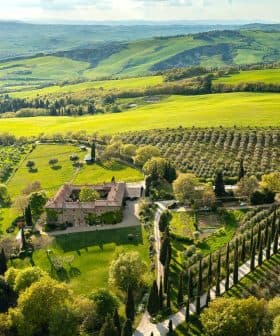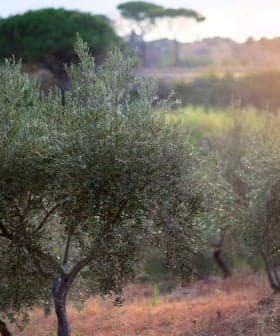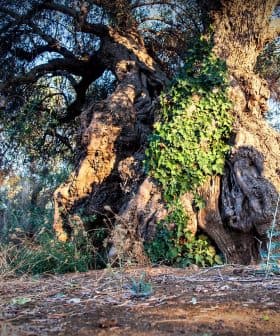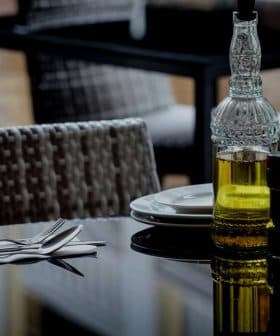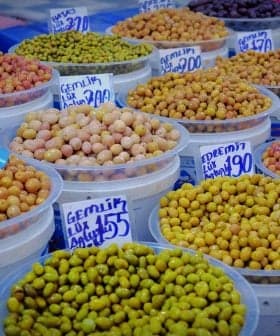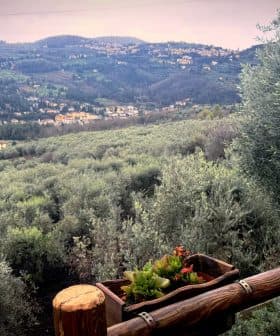Olive Trees on Public Land Provide Bountiful Harvest for Italian Locals
A growing number of local authorities encourage local citizens and schools to harvest abandoned olive trees on public lands.
 Students from Catullo secondary school harvesting olives on public land
Students from Catullo secondary school harvesting olives on public land Italian volunteers in various regions are caring for olive trees to produce olive oil for self-consumption or charity. The initiative began during the Covid-19 pandemic and has expanded to involve schools and other community members, with some municipalities seeking volunteers to maintain olive trees year-round to preserve a collective heritage and raise environmental awareness.
Italian volunteers are caring for olive trees in parks, along roads, riverbanks and public squares, with the resulting olive oil destined for self-consumption or charity.
“The idea of a community-driven olive harvest activity came up during the peak of the Covid-19 pandemic when everything was on hold, the economy and so forth,” Cristina Degasperi, the secretary of educational and environmental policies in Desenzano, a municipality near Lake Garda, told Olive Oil Times.
See Also:Optimism in Italy as Olive Harvest Gets Underway“That was something that could be done; it could benefit our trees while also supporting our citizens, so we went for it,” she added.
The northern Italian region of Garda, which sits on the southern banks of Italy’s largest lake, has a long tradition of olive growing. In Desenzano, hundreds of olive trees are scattered throughout the municipality.
“For a long time, local institutions invested in planting new trees every year, not only olive trees,” Degasperi said. “A new tree is planted for every new citizen born in our town. Last year, we planted 183 trees.”
Still, managing and maintaining many trees may divert resources from other public priorities. In the case of the olive trees, a dedicated cooperative takes care of their pruning. Before the new initiative, olives were often left on the trees.
To participate, interested citizens only have to answer the public call based on the official map of more than 500 olive trees. “Each resident can ask to harvest up to five trees, which are then listed as reserved,” Degasperi said.
“Up to now, the only exception is the Catullo secondary school,” she added. “Their harvest of 100 trees is reserved.”
For years, the Catullo students participated in the olive harvest of the trees growing next to the school playgrounds.
“This is our fourth year,” Carlo Viara, Catullo’s head teacher, told Olive Oil Times. “The idea of harvesting the olives came on the heels of the other charity initiatives that the Catullo school always organizes at the end of every year.”
The success of the initiative and the interest among the school community prompted the agreement with the municipal authorities and the expansion of the harvest to dozens of other trees. The initiative attracts students and their families, teachers and others related to the school activities.
“One of the most interesting aspects of the initiative is the enthusiastic participation in the group activities by all students, even by those who struggle a little more during normal class hours,” Viara said.
“Last year, we harvested just about seven quintals of olives and produced 180 half-liter bottles,” she added. “This year, 180 students participated in the harvest on school grounds. Approximately 70 volunteers on Saturday and Sunday participated in the harvest of the trees in the other areas.”
Students, their families and the other volunteers can assist in the olive milling and bottling processes. Sales of the bottles will finance a supporting initiative at a twinned school in India.
“This year, the numbers are going to be much lower, as there are fewer olives on the trees, and they are not the same quality as last year,” Viara said.

Catullo secondary school students produced 90 liters of olive oil from the olives they harvested.
In some cases, such as in Massa Marittima, a town in southern Tuscany, local authorities look for volunteers to solve what is also perceived as a hygienic issue, as olives on abandoned trees can easily be targeted by the olive fruit fly.
Dozens of olive trees on public land can be spotted near the medieval walls surrounding large portions of Massa Marittima. More are located in other public areas outside the city center. Every year, volunteers can apply to harvest up to 25 olive trees each.
The maximum number of olive trees each volunteer can harvest changes significantly from one region to another. In Cerveteri, a municipality in central Italy not far from Rome, residents apply to harvest a maximum of five trees each.
In all cases, though, access to the trees is completely free. Volunteers use their own means to harvest and only need to remove debris or small branches produced during the olive-collecting operations.
In a few instances, including volunteer harvests in Grottammare, a town on the Adriatic Sea in central Italy, the requests from the volunteers far exceed the availability of trees, which number slightly more than 200.
According to the local authorities, Italy’s long cultural ties to olive growing and olive oil production fuel the long-standing interest in harvesting abandoned trees. Additionally, many olive trees are century-old monuments, further enhancing the significance and the appeal of maintaining them.
Given the success and the interest in community harvest activities, some municipalities are trying to take it further.
In 2023, the town of Pistoia, not far from Florence, in northern Tuscany, began looking for volunteers interested in caring for the olive trees all year round for a minimum of three years.
There are almost 900 trees that benefit from dedicated caretakers who began working on most of them in 2019.
“We have included even more trees in the project now,” said Alessia Bartolomei, a municipal secretary of urban green spaces. “Through these years, the maintenance work done by residents ensured quality, and the territory profited from this.”
“The goal is to preserve a collective heritage and raise awareness about the environment and the advantages of taking good care of public spaces together,” she concluded.
Share this article


